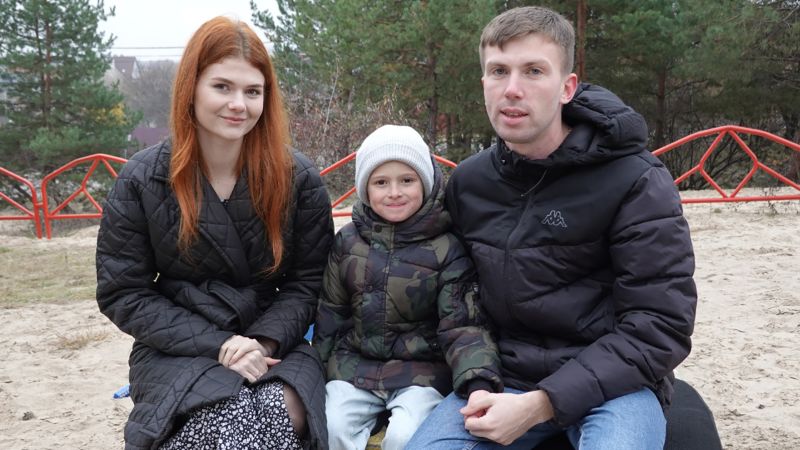ON BOARD THE SEBIRD (AP) – As dozens of African migrants crossed the Mediterranean Sea in a fragile white rubber dinghy, a small plane circling 300 meters above closely watched their attempt to reach Europe.
The twin-engine Seabird, owned by the German non-governmental organization Sea-Watch, is tasked with documenting human rights violations committed against migrants at sea and relaying distress cases to nearby ships and authorities who increasingly need it. more ignored their calls.
On this cloudy October afternoon, an approaching thunderstorm increased the danger to the overcrowded boat. Nearly 23,000 people have died or gone missing in the Mediterranean trying to reach Europe since 2014, according to the United Nations Migration Agency.
“Nour 2, Nour 2 is the Seabird plane, the Seabird plane,” the plane’s tactical coordinator, Eike Bretschneider, radioed the only ship nearby. The captain of Nour 2, agreed to change course and check the frail boat. But after seeing that the boat had a Libyan flag, people refused its help, the captain reported on the crackling radio.
“They say they only have 20 liters of fuel left,” the captain, who did not identify himself by name, told the Seabird. “They want to continue their journey.
The destination of the small boat was the Italian island of Lampedusa, where tourists seated in outdoor cafes sipped Aperol Spritz, oblivious to what was happening some 60 nautical miles (111 km / 68 miles) away. south of them on the Mediterranean Sea.
Bretschneider, a 30-year-old social worker, made some quick calculations and concluded that the migrants must have left Libya around 20 hours ago and still had 15 hours before they reached Lampedusa. It was if their boat didn’t collapse or capsize along the way.
Despite the risks, many migrants and refugees say they would rather die trying to cross to Europe than be sent back to Libya where, upon disembarking, they are placed in detention centers and often subjected to abuse. incessant.
Bretschneider sent the coordinates of the dinghy to the air liaison officer stationed in Berlin, who then relayed the position (inside the Maltese search and rescue area) to Malta and Italy. Unsurprisingly to them, they received no response.
Running out of fuel, the Seabird had to leave the scene.
“We can only hope that people will reach shore at some point or be rescued by a European Coast Guard vessel,” Bretschneider told AP as they returned.
Activists have grown accustomed to their distress calls going unanswered.
For years, human rights groups and experts in international law have denounced the fact that European countries are increasingly ignoring their international obligations to rescue migrants at sea. Instead, they have outsourced them. rescues to the Libyan Coast Guard, which have a history of reckless interceptions as well as links to human traffickers and militias.
“I’m sorry, we don’t speak with NGOs,†a man answering a phone from the Maltese Rescue and Coordination Center told a Sea-Watch member inquiring about a boat in distress last June. In a separate call to the rescue and coordination center in Rome, another Sea-Watch member was informed: “We have no information for you.
The Maltese and Italian authorities did not respond to questions sent by AP.
Trying to get in touch with the Libyan rescue and coordination center is an even bigger challenge. In the rare event that someone picks up, the person on the other side of the line often does not speak English.
More than 49,000 migrants have reached Italy’s shores so far this year, according to Italy’s Interior Ministry, nearly double the number who crossed at the same time last year.
Although it is illegal for European ships to bring rescued migrants back to Libya on their own, information shared by drones and EU surveillance planes has enabled the Libyan Coast Guard to dramatically increase their ability to prevent migrants from reaching Europe. So far this year, it has intercepted around half of those who tried to leave, returning more than 26,000 men, women and children to Libya.
Sea-Watch has relied on millions of euros in individual donations over several years to expand its air monitoring capabilities as well. It now has two small planes which, with a bird’s eye view, can find boats in distress much faster than ships.
Taking off from Lampedusa, closer to North Africa than to Italy, the planes can reach a case of distress fairly quickly if its position is known. But when there are no exact coordinates, they have to search, sometimes for hours, and scan the sea with binoculars.
Even when flying low, finding a small boat in the vast Mediterranean can tire the most experienced eyes. The team of volunteers of three to four people point out every little point on the horizon that could potentially be people in distress.
“Target at 10 am,” warned the photographer of the Seabird sitting in the back of a recent flight.
The pilot turned left to inspect it.
“Fishing boat, no worries,†replied Bretschneider, the tactical coordinator.
In rough seas, breaking waves can play tricks and, for brief moments, look like rickety boats in the distance. Frequently, the “targets†turn out to be nothing at all, and the Seabird returns to shore hours later without any new information.
But finding boats in distress is only the first challenge. Getting them to help is just as difficult, if not more difficult.
With the absence of state rescue vessels and NGO vessels increasingly stranded to leave port, Sea-Watch often relies on the goodwill of merchant vessels navigating the area. But many are also reluctant to get involved after several commercial vessels were stranded at sea for days as they waited for permission from Italy or Malta to disembark the rescued migrants. Others brought them back to Libya in violation of maritime and refugee conventions.
This week a Naples court sentenced the captain of an Italian commercial vessel for the return of 101 migrants to Libya in 2018.
Without any state authority, the Seabird can only remind captains of their duty to rescue people in distress. For example, Bretschneider recently called on an Italian supply ship to rescue 65 people from a drifting migrant boat, moments before the arrival of the Libyan coast guard.
On another mission a few days later, the Seabird returned from its flight not knowing what would happen to the people it had seen on the white rubber dinghy.
Bretschneider checked his phone at dinner that night, hoping for good news. Across the Mediterranean, 17 bodies had washed up in western Libya, apparently from another boat.
The next day, the Seabird took off to search for the white rubber dinghy again, to no avail. On the way back, they received a message from the earth.
The white rubber dinghy had reached the waters near Lampedusa and was recovered by the Italian coast guard. The people had done it.
 Christ Yoder
Christ Yoder
/cloudfront-us-east-1.images.arcpublishing.com/gray/ODYKQRO5GRGJREMXBZNK5UFIX4.jpg)


